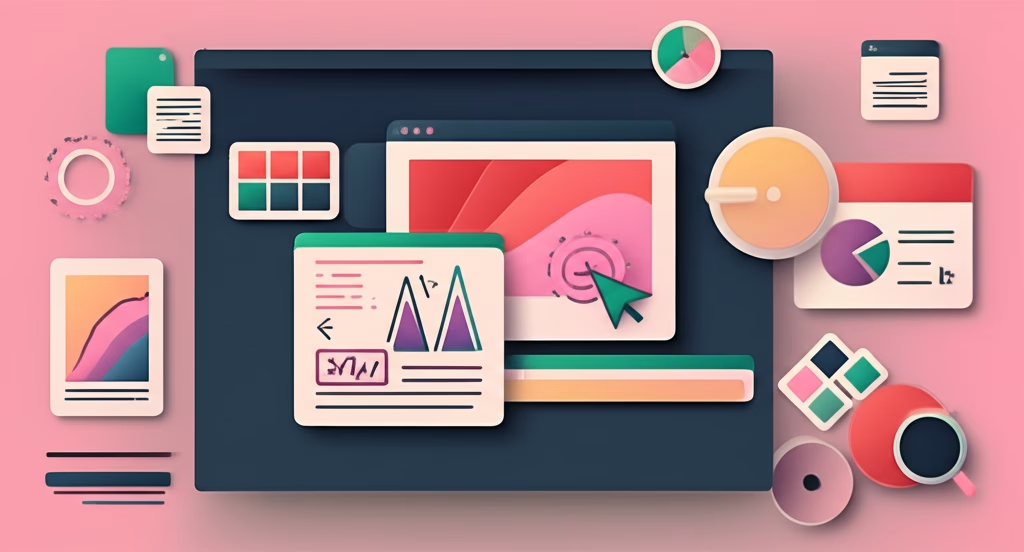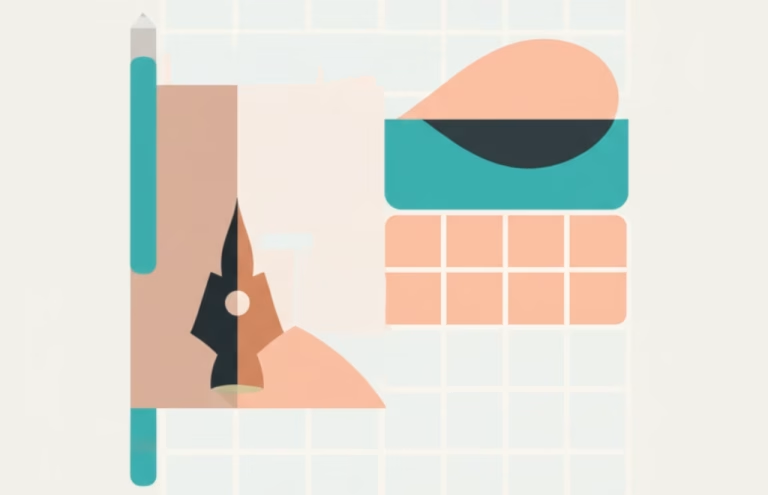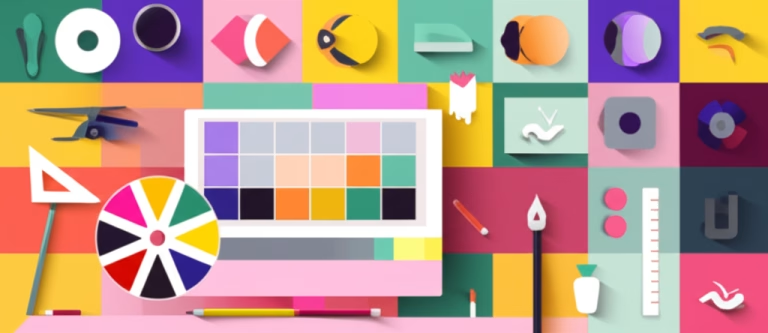Free online courses offer a fantastic starting point for aspiring designers. Feeling overwhelmed by where to begin your creative journey? Or maybe you’re unsure if design is even for you? You’re not alone! Many people dream of creating beautiful things but don’t know the first step or have a big budget for expensive schools.
The good news is, you don’t need to break the bank to explore the world of design. Free online courses are an incredible resource, opening doors to foundational knowledge without the commitment of traditional education. This guide will walk you through what these courses are, why they matter, how to pick the right ones, common pitfalls to avoid, and how to actually use what you learn in your own projects.
What are Free Online Courses?
Think of free online courses as digital classrooms you can access from anywhere with an internet connection. They are educational programs delivered over the web, covering a vast range of subjects, including design. Unlike traditional schooling, these courses often allow you to learn at your own pace and schedule, making them super flexible.
They can range from short introductory sessions covering basic concepts like color theory or typography to more comprehensive series on using design software or understanding user experience. Many are offered by universities, educational platforms, or even individual experts eager to share their knowledge.
These digital learning opportunities provide structured content, often including video lectures, reading materials, quizzes, and sometimes even small assignments. They’re designed to introduce you to new skills or deepen your understanding of a specific area without requiring any financial investment upfront.
Why are Free Online Courses Important for Beginners?
For anyone just starting out in design, free online courses are a game-changer. First off, they remove the biggest barrier for many: cost. You can explore different design fields, like graphic design, web design, or illustration, without spending a dime. This low-risk way to dip your toes in helps you discover what truly sparks your interest.
They provide a structured way to learn foundational concepts. Instead of trying to piece together random tutorials from all over the internet, a course gives you a clear path from beginner basics to more advanced topics. This structure is crucial for building a solid understanding of design principles.
Furthermore, these educational resources are incredibly accessible. Whether you live far from a design school or have a busy schedule, you can learn on your own terms, whenever and wherever it’s convenient. This flexibility empowers you to start your design journey regardless of your circumstances.
Using free online courses also helps you build confidence. Successfully completing modules and understanding new ideas gives you a sense of accomplishment. It proves to yourself that you can learn design skills, motivating you to continue practicing and exploring more complex areas.
Finally, they serve as an excellent stepping stone. After taking a few free courses, you’ll have a much clearer idea of what areas you want to specialize in. This knowledge is invaluable if you decide to pursue more formal education, paid courses, or a career in design, ensuring you invest your time and money wisely down the line.
Key Principles When Choosing Free Courses
With so many free online courses available, how do you pick the right ones? It’s like walking into a huge library – exciting but potentially overwhelming. Applying a few simple principles can help you find valuable learning experiences that truly help you grow as a designer.
- Look for Reputable Platforms: Stick to well-known educational websites or universities. Platforms like Coursera, edX, Skillshare (often have free trials or specific free courses), Khan Academy, or even dedicated design software company tutorials (like Adobe) are generally reliable sources.
- Check the Course Syllabus: Before enrolling, look at the course outline. Does it cover the topics you’re interested in? Is it structured logically, starting with basics and moving to more complex ideas? A clear syllabus indicates a well-planned learning experience.
- Read Reviews and Student Feedback: What do others who took the course say? Look for comments on the instructor’s teaching style, the quality of the content, and whether the course delivered on its promises. This is gold for spotting potential issues or finding hidden gems.
- Consider the Instructor: Who is teaching the course? Do they have experience in the design field they are teaching? While not always possible with free courses, knowing the instructor’s background can give you confidence in the quality of the material being taught.
- Focus on Foundational Concepts: Especially when starting, prioritize courses that teach core design principles like composition, hierarchy, color theory, and typography. Software skills are important, but understanding the fundamentals makes you a better designer regardless of the tools you use.
- Assess the Learning Format: Does the course rely mostly on videos, reading, or interactive exercises? Think about how you learn best and choose formats that match your learning style. Some courses are heavy on theory, others on practical application.
- Check for Any Requirements: While free, some courses might require specific software (which might have free trials or free alternatives you can use) or prior knowledge. Make sure you meet any prerequisites or are prepared to acquire the necessary tools.
By keeping these points in mind, you can navigate the world of free online courses more effectively, finding resources that genuinely contribute to your design education.
Common Mistakes About the Topic and How to Avoid Them Headlines
Diving into free online courses is exciting, but beginners often stumble over common hurdles. Recognizing these potential pitfalls upfront can save you time and frustration, ensuring you get the most out of your learning experience.
- Enrolling in Too Many Courses at Once
How to Avoid: It’s tempting to sign up for everything that looks interesting, but juggling multiple courses can quickly become overwhelming. Focus on completing one or maybe two courses at a time before adding more. This allows you to dedicate sufficient time and attention to each one, ensuring better comprehension and retention. Prioritize based on your immediate learning goals. - Not Setting Aside Dedicated Study Time
How to Avoid: Free courses offer flexibility, but that can also mean procrastination. Treat your online learning like any other important appointment. Schedule specific blocks of time each week for watching lectures, doing readings, and completing exercises. Consistency is key to making progress and building a learning habit. - Skipping the Practical Exercises or Assignments
How to Avoid: Theory is essential, but design is a hands-on skill. The real learning happens when you apply concepts. Don’t just watch videos; actively participate in any provided exercises or create your own projects based on the lessons. Practice is the best way to solidify your understanding and develop your skills. - Not Taking Notes or Summarizing Key Information
How to Avoid: It’s easy to passively consume content, especially with video lectures. Engage actively by taking notes, summarizing key concepts in your own words, or creating flashcards. This process helps reinforce memory and ensures you can recall important information later. - Comparing Yourself Too Much to Others
How to Avoid: Online forums or social media can expose you to the work of more experienced designers. While inspiring, constant comparison can be discouraging. Remember everyone starts somewhere. Focus on your own progress and celebrate small wins. Your journey is unique. - Not Seeking Feedback on Your Work
How to Avoid: If the course platform has forums or community features, or if you’re sharing work elsewhere, don’t be afraid to ask for constructive criticism. Feedback is invaluable for identifying areas for improvement. Be open to suggestions and use them to refine your skills. - Giving Up When You Encounter Difficult Concepts
How to Avoid: Learning design involves grappling with new ideas and techniques that can feel challenging at first. Don’t get discouraged by difficulty. Break down complex topics into smaller parts, re-watch lectures, or seek out supplementary resources. Persistence pays off.
Being aware of these common pitfalls and actively working to avoid them will significantly improve your experience with free online courses and accelerate your learning process in design.
How to Apply the Topic to Your Projects
Learning design principles and software skills through free online courses is just the first step. The real magic happens when you start applying that knowledge to your own creative projects. This is where theory meets practice, and your understanding truly deepens. Here’s a simple way to start using what you’ve learned:
- Start a Small Personal Project: Don’t wait for the perfect client or idea. Pick something simple that interests you. Redesign your favorite app icon, create a poster for a fictional event, design a simple logo for a hobby, or illustrate a quote you like. Keep the scope manageable for a beginner.
- Identify Specific Concepts from Your Course to Apply: Think back to the courses you’ve completed. Did you learn about color palettes? Apply a specific scheme to your project. Did you study typography? Choose fonts carefully and pay attention to hierarchy. Focus on implementing just one or two key takeaways from a course in each project.
- Sketch and Plan Before You Design Digitally: Before jumping into software, grab a notebook and pen. Sketch out your ideas. Plan your layout, color scheme, and typography. This step helps you think through the design problem and apply principles learned in your courses before getting bogged down in technical details.
- Use the Software Skills You’ve Learned: Now, open the design software you practiced with in your course. Try to use the tools and techniques you were taught to bring your sketched plan to life. Don’t worry about making it perfect; focus on practicing the software skills.
- Get Feedback on Your Work: Share your project with others. This could be in online design communities, with friends, or family. Explain what you were trying to achieve and ask for constructive criticism. Which elements work? Which don’t? Why?
- Iterate and Refine Based on Feedback: Use the feedback you receive to improve your design. Go back to your software and make changes. This iterative process is crucial in design and helps you apply lessons learned from both the course material and real-world critique.
- Build a Portfolio Piece: Once you’re happy with your project, save it in a format suitable for sharing online. This project, born from applying your free course knowledge, can become a valuable piece in your budding design portfolio. As you complete more courses and projects, your portfolio will grow, showcasing your developing skills.
By actively applying what you learn in free online courses through personal projects, you move from being a passive learner to an active creator. This hands-on approach is the most effective way to build confidence and proficiency in design.
Frequently Asked Questions (FAQ) about Free Online Courses
Q: Are free design courses really worth my time compared to paid options?
A: Absolutely! While paid courses might offer more depth or personalized feedback, free online courses are invaluable for exploring interests, learning foundational concepts, and getting started without financial risk. They are a fantastic initial step.
Q: How long does it take to learn design using free courses?
A: Learning design is a continuous journey. Free online courses can teach you specific skills or concepts in weeks or months, depending on the course length and your study time. Becoming proficient takes ongoing practice and learning.
Q: Can I get a job in design just by taking free courses?
A: While free courses build foundational skills, landing a job usually requires more. You’ll need a strong portfolio showcasing your applied skills, practical experience (even through personal projects), and often, more advanced learning or specialization. Free courses are a great start, not typically the finish line for a career.
Q: Do free courses offer certificates?
A: Some platforms or courses do offer free certificates of completion, while others may charge a fee for one, or not offer them at all. For beginners, focus more on the knowledge and skills gained rather than just getting a certificate. Your portfolio is a stronger indicator of your abilities.
Keep Learning and Creating
You’ve taken a great step by considering free online courses to start your design journey. We’ve covered what they are, why they’re perfect for beginners, how to choose wisely, common mistakes to steer clear of, and practical ways to put your new skills to work. Remember, learning design is a marathon, not a sprint, and these accessible resources provide an excellent starting line.
Don’t feel pressured to know everything at once. Start with one course, focus on understanding the basics, and most importantly, start creating. Every small project you complete, every concept you apply, builds your confidence and skill set. Embrace the process, be patient with yourself, and keep practicing regularly.
Your creative potential is waiting! Use these amazing free online courses as your launchpad. The world of design is vast and exciting, and there’s always more to explore and learn. Keep that curiosity alive and keep designing!
Continue your studies by reading our article on What is Graphic Design!



